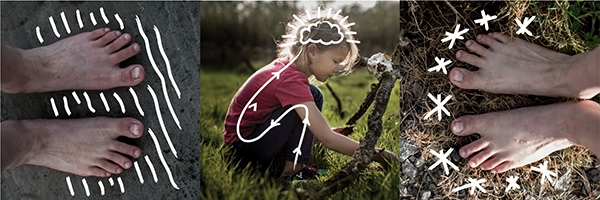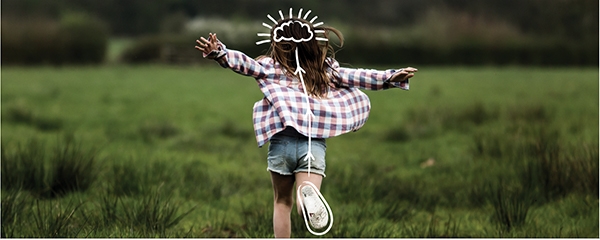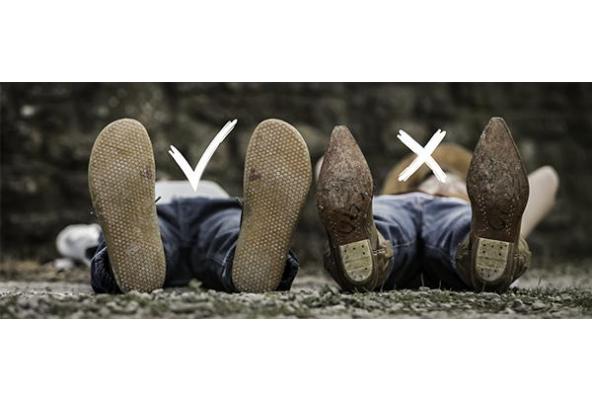We often get asked how to transition kids into barefoot shoes, because it is a very different experience of wearing ‘normal’ shoes.
So, let’s start at the beginning. If your child hasn’t been able to spend much time barefoot and has mainly worn traditional, thick-soled, padded shoes, they might feel some initial discomfort at having their feet released into a minimal shoe.
This is normal and to be expected – but you can prepare and mitigate for this. But FIRST, let’s consider what’s going on in your child’s foot when they pull on a barefoot shoe.
- New sensory messages are sparking between their feet and brains because their feet can feel the ground more in our ultra-thin, puncture-resistant soles. This means kids’ proprioception can improve (how your body feels its motion through the sensorial feedback our bodies provide). Highly-attuned proprioception is important for our movement and balance confidence, skill and agility.
- The whole foot can move and flex more because VivoKids are wide and bendy. This means they’ll be using joints and muscles in their feet and ankles your child might not be used to – so any little aches could be the feeling of un-used muscles just getting going.
- The arch and ankle will work more, as they are not being tightly bound by a normal shoe with a padded sole, arch support and heel lift. This means how kids run and jump might change slightly – most of the time kids will do this naturally without even noticing, although they might complain they ‘felt’ the landing of a jump more.
- Big Toe is activated as the foot’s anchor and pivot. Normal shoes compromise Big Toe; narrow toe boxes push it towards the other toes, weakening it. Shoes with even the smallest heel and toe lift constantly tilt Big Toe slightly up, so it becomes ‘lazy’ and unable to be the foot’s anchor, pushing the whole body off-balance. Barefoot and in minimal shoes like VivoKids, Big Toe plants firmly on the ground with space to grow straight and strong – away from the other toes, which will also be able to spread and splay. This will help Big Toe be the best possible anchor and pivot for the whole bodies’ movement.


And the result? You might notice your kids moving ever-so-slightly more carefully as their brain sends more messages to the foot, reacting to all the sensory messages the foot is sending to the brain. Soon, they will start realizing how much MORE and BETTER they can move because of this sensory feedback: their balance might improve, their climbing getting more effective and confident, and their running, walking and standing gait improving so they don’t get tired, twitchy and uncomfortable as they stand, squat, run and walk. (In fact, as kids adapt to barefoot, it’s parents who need to watch themselves as they might not be used to the amount of awesome movement their kids can achieve – some might need to resist their inner helicopter!)
So how can you best prepare your child for this transition?
- Go slow - make sure kids spend time barefoot at home first before gradually adding in barefoot shoe time outdoors and finally, for sports and long walks.
- Try some Toe-ga with your kids. Here’s a link to some useful videos from our website. Toe-ga is a series of easy exercises to ‘wake-up’ some of those tiny muscles and joints in your feet, helping your posture and barefoot movement. Good for everyone!
- Get squatting! By this we mean a deep squat with parallel feet, bum down low and knees over ankles. We’re pretty sure your kids will be better at this than you, but squatting is an important indicator of overall fitness and resistance to injury, so it’s worth making sure your kids don’t lose this awesome skill most are lucky enough to be born with.
- Reduce time spent sitting in chairs. Our bodies didn’t evolve over millions of years to spend hours and hours every day sat in a chair, with our bodies all folded up. So many adults struggle with aches and pains, which reduce their movement ability. So, help protect your kids’ movement future by keeping the chairs at bay! Even little tweaks, like making screen and TV-time sitting on the floor instead of slumped on a sofa, is going to help their bodies remain mobile, flexible and happy to go wild and barefoot!
- However, it goes without saying that if you’re seriously concerned about your child’s foot development, consult your doctor and speak to as many specialists as possible.


Finally - remember, our feet are an awesome gift from our ancestors: they’ve been evolving for thousands of years to run, climb, bend and flex BAREFOOT (or as close to barefoot as climate permits). Strong, healthy feet are the foundation for healthy, natural movement.
Evolution certainly didn’t count on our feet being wrapped up, cocooned and cushioned in a traditional shoe.
VivoKids are THIN, WIDE and BENDY to help your kids’ feet grow strong and healthy – so, are you ready to let them run wild?!



